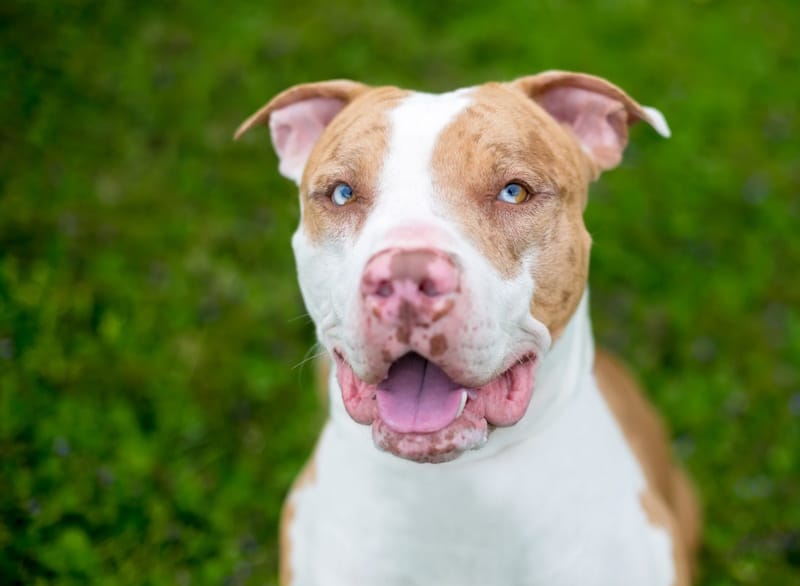I figured, in light of our discussion this week, that it might be a good idea to realistically examine dog bites. How dangerous are dogs, really?
Janis Bradly wrote a fantastic book on this very subject. It’s called, Dogs Bite: But Balloons and Slippers are More Dangerous. This book is a great resource that puts into perspective just how dangerous “man’s best friend” actually is.
Janis contends that:
- the media distorts the actual risk through sensationalism and questionable research techniques
- most bites are preventable through education and responsible dog ownership
- most bites do not cause significant damage, most aggression is highly ritualized
- breed stereotyping masks the real issues
…public education should include a clear eyed looked [sic] at the facts which are: dogs almost never kill people, they bite much less often than one would expect, and when they bite, they seldom injure.
The rest of this fantastic book supports these claims with interesting and thorough research. This book is compelling, informative, and best of all, gets to the real issues of the dog bite problem which is this: virtually every dog bite can be prevented. Janis rightly contends that socialization, common sense, and holding pet owners accountable are better ways to reduce the frequency of bites than shooting or euthanizing dogs or banning breeds.
In the vast majority of cases, dogs bite because of human error. “Let sleeping dogs lie” is probably one of the first sentences ever to enter human spoken language (and was probably communicated through grunts, whacks on the head, or via a growl or snap from the dog inn question before spoken language) and yet many people think nothing of going up to a strange dog and scratching his head. We leave dogs and infants together unattended. We allow a stranger to come and hug our dog, despite obvious signs that she is uncomfortable. We pet strange dogs without asking permission, or say, “oh, but dogs like me!” as we ignore a panicked look in the owner’s eye and approach a lunging, snarling dog, hands reaching toward foaming mouth to pat the dog on the head.
Really, with how ill-behaved we primates can be when it comes to the animal we have most thoroughly domesticated, it’s a wonder dogs don’t bite us more.
You’d be hard pressed to sell newspapers with a front page headline reading, “Dog growls at person. Person backs off. Nothing else happens!” More often than not, this describes the extent of a dog’s “aggression.” While it is certainly possible for any dog to inflict serious injury upon a person, it is exceptionally rare for a dog to do so. We’ve largely bred aggression out of them – that’s what makes them dogs.
I am a firm believer that dogs use the least amount of aggression they feel is necessary to get their point across which usually involves some desire to create distance between the dog and the stimulus toward which he is reacting. If a dog freezes in place and you back off, in the dog’s mind the problem is solved. Maybe you don’t back off when he freezes, so he begins growling. This strategy still doesn’t work, so he lifts his lip in warning. You’re still coming, saying “oh, puppy, let me take that bone out of your mouth, please!” so he snaps at you. “Silly dog, it’s ok” you say as you reach out to pet him. He bites you.
Dogs don’t “try to bite.” They either bite you, or they don’t bite you. If he wants to bite you, he will. If he “tries to bite you,” he’s likely just giving you a warning which, if heeded, will prevent you from actually being bitten. Thanks, dog!
As someone who works frequently with dogs with bite histories, I can say this – most dogs are biting to try to defend themselves from a perceived threat. Very few dogs go out intending to bite someone and cause damage if they do not feel threatened by that person, and these exceptionally rare dogs often have genetic, hormonal, or other medical factors contributing to the formulation and maintenance of aggressive behavior. These dogs are the ones trainers refer to behaviorists.
These types of situations always remind me of the infamous words of one of the world’s most respected dog behavior authorities, veterinary behaviorist Ian Dunbar. To paraphrase (and make the phrase more acceptable for our younger dogsters), Ian says something to the effect of, “If you don’t want a dog to bite you, don’t be an idiot.”
To finish today’s entry, let’s put this in perspective. From Dogs Bite:
Your chance of being killed by a dog or dogs are roughly one in 18 million. That means you are twice as likely to win a super lotto jackpot on a single ticket than to be killed by a dog. That means you are five times as likely to be killed by a bolt of lightning – not just struck by one, mind you – killed. It’s instructive to remember here that being struck by lightning is a pretty universal clich for an act of God being visited upon one, precisely because it is so extraordinary. Dog-attack deaths are even more extraordinary – five times more extraordinary.
Featured Image Credit: Mary Swift, Shutterstock









